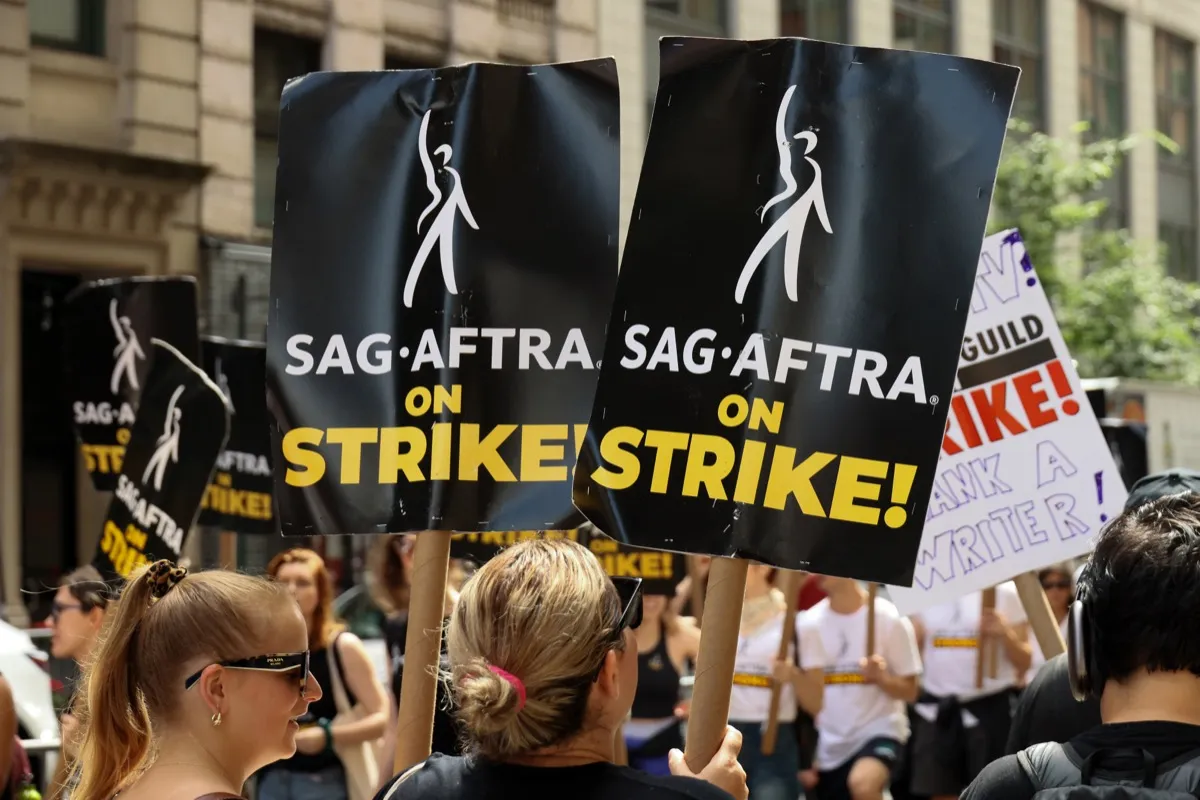Hollywood actors have now been on strike for over 100 days and some industry heavyweights are reportedly now coming together to pressure SAG-AFTRA to resolve the strike with the AMPTP.
According to Variety, a number of A-listers including Tyler Perry, George Clooney, Scarlett Johansson, Emma Stone, and others (none of whom seem to have made an appearance on the picket lines) recently had a Zoom meeting with Fran Drescher, the president of SAG-AFTRA, as well as Duncan Crabtree-Ireland, the executive director of the union. Variety described the meeting:
Though the tone has been described as “supportive,” the actors did not call the meeting merely to express support. According to several sources, the A-listers represent significant discontent within the guild that talks have broken down, and are looking for a path to restart negotiations and end the strike.
The actors reportedly gave a presentation to Drescher and Duncan after the Alliance of Motion Picture and Television Producers reportedly suspended negotiations with SAG-AFTRA because of how badly they were going. One of the AMPTP’s biggest points of contention is the issue of streaming residuals. With how much the film and television landscapes have changed with the introduction of streaming, actors, writers, and basically everyone who isn’t a studio executive is demanding fair compensation.
Per Variety, “SAG-AFTRA wants $500 million a year, which would come in the form of a per-subscriber fee assessed on each of the streaming platforms. That money would be distributed to actors by a jointly administered trust, presumably based on viewership data for each streaming show.” But Drescher has said that the studio heads have deemed the proposal “untenable.”
In recent months, actors (and writers and others) have been publicly sharing the income they’ve received for streaming residuals, often just mere pennies. This has been eye-opening because I think so many people assume that everyone in Hollywood is mega-rich, and that just isn’t the case—not before the introduction of streaming and definitely not since.
We received some insight into exactly what it would cost companies to redo some of their practices. In an email from October 12, the actors’ union said:
“We have made big, meaningful counters on our end, including completely transforming our revenue share proposal, which would cost the companies less than 57¢ per subscriber each year.” This doesn’t seem like too much to me but the CEOs were not having it. Juxtaposing this with how little some people get paid per show helps highlight that the divisions that plague Hollywood are in many ways, similar to those that plague other industries.
A “generous” proposal
The celebrity group that met with Drescher remains focused on how to fairly compensate people, though this is a sticky situation. Part of their presentation reportedly included a proposal to raise the cap on union dues for higher earners like themselves, allowing that money to fund things like healthcare for union members.
SAG-AFTRA addressed the proposal as part of a longer thread on Twitter/X. “This generous concept is worthy of consideration, but it is in no way related to and would have no bearing on this present contract or even as a subject of collective bargaining. It is, in fact, prohibited by Federal labor law,” the union wrote.
“For example, our Pension and Health plans are funded exclusively from employer contributions. It also doesn’t speak to the scale of the overall package.”
As the thread notes, these celebrities’ “creativity and earnest desire to help solve the impasse are very much appreciated.” At the same time, it doesn’t seem like it could help the union reach its long-term goals for a few actors to offer their own personal wealth in place of equitable pay. That just lets the studios off the hook.
Negotiations have continued this week and it will be interesting to see if ANY headway can be made.
(featured image: Dia Dipasupil/Getty Images)









Published: Oct 26, 2023 05:47 pm